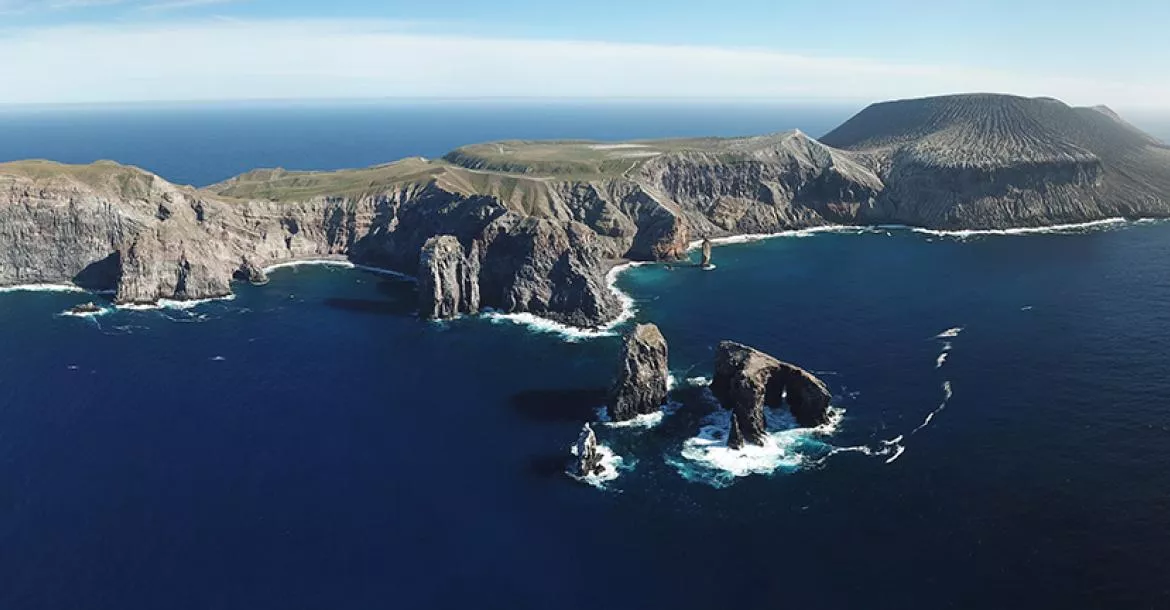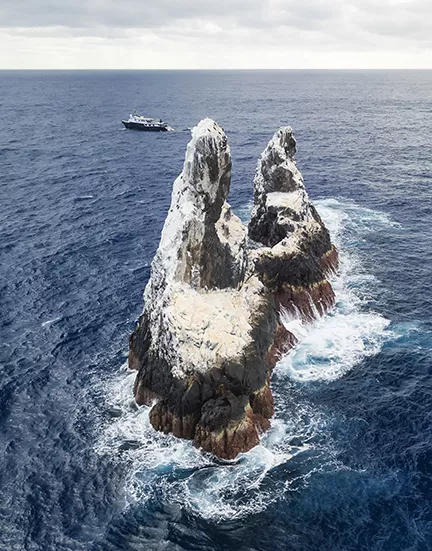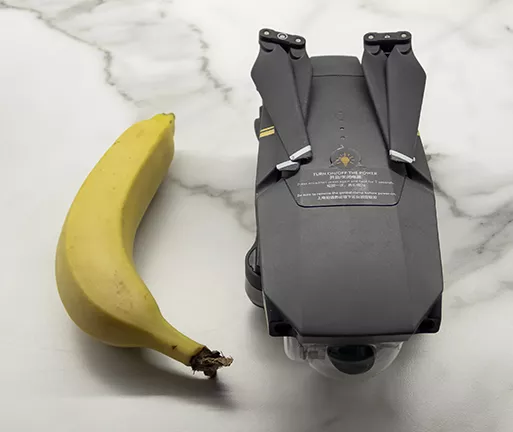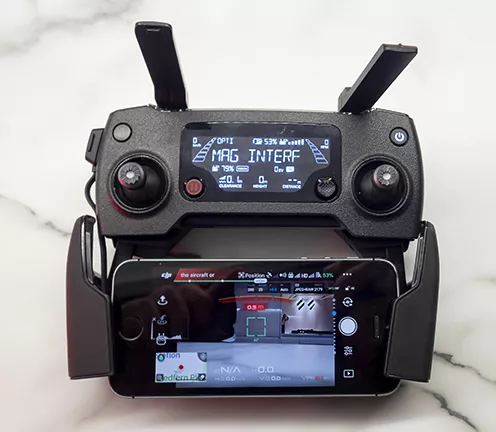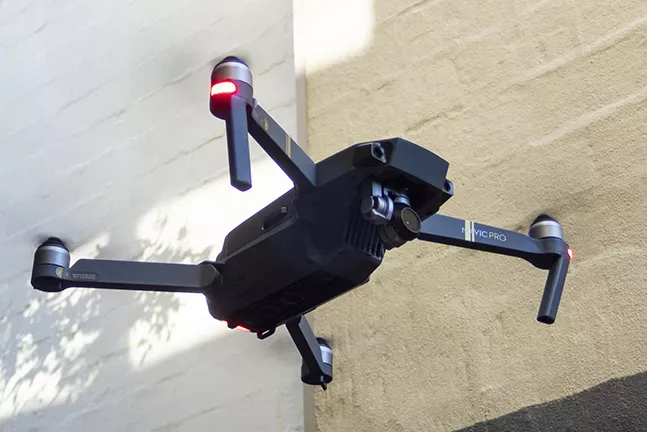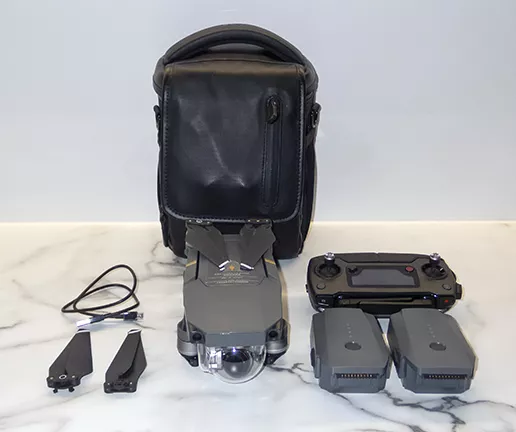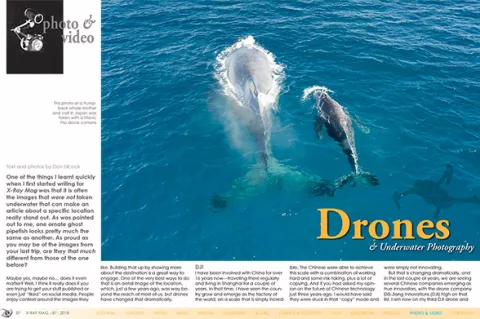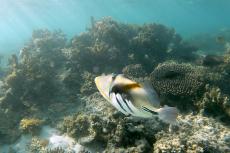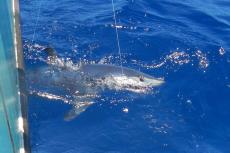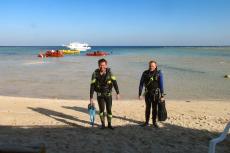One of the things I learned quickly when first writing for X-Ray Mag was that it is often the images there were not taken underwater that can make an article about a specific location really stand out. As was pointed out to me, one ornate ghost pipefish looks pretty much the same as another. As proud as you may be of the images from your last trip, are they that much different from those of the one before?
Contributed by
Factfile
Asia correspondent Don Silcock is based in Bali, Indonesia.
For extensive location guides, articles and images on some of the best diving locations in the Indo-Pacific region, visit his website at: Indopacificimages.com.
Maybe yes, maybe no… does it even matter? Well, I think it really does if you are trying to get your stuff published or even just “liked” on social media. People enjoy context around the images they like. Building that up by showing more about the destination is a great way to engage. One of the very best ways to do that is an aerial image of the location, which, just a few years ago, was way beyond the reach of most of us, but drones have changed that dramatically.
DJI
I have been involved with China for over 16 years now—travelling there regularly and living in Shanghai for a couple of years. In that time, I have seen the country grow and emerge as the factory of the world, on a scale that is simply incredible. The Chinese were able to achieve this scale with a combination of working hard and some risk-taking, plus a lot of copying.
And if you had asked my opinion on the future of Chinese technology just three years ago, I would have said they were stuck in that “copy” mode and were simply not innovating. But that is changing dramatically, and in the last couple of years, we are seeing several Chinese companies emerging as true innovators, with the drone company DJI high on that list. I am now on my third DJI drone and love it. I bought them all myself, by the way.
My current one, a Mavic Pro, has tremendous functionality, great technology, is small, takes good photos and video, is incredibly stable and is great fun. Simply stated, it allows me to take significantly different images when I am on a dive trip, which really lets me put where I have been into context.
The Mavic Pro
DJI (Dà-Jiāng Innovations) is based in Shenzhen, just north of Hong Kong, in southeast China. Shenzhen was one of the first Special Economic Zones (SEZs) created by Deng Xiaoping and has become known as China’s Silicon Valley. It is a very dynamic place, which looks and feels a lot like Singapore.
DJI seems to model itself on Apple and has a very structured, systematic and innovative approach to business, which is very impressive. At the consumer end of their technology, they made their name with the Phantom drones, which have basically dominated the market.
My first drone was the Phantom 4, and I was stunned with what it could do. But, like many other people, I did not like the size, which after you include extra batteries, etc, could easily take up half a suitcase—precious space and weight for the travelling diver. But it was worth the extra hassle for the images and video it provided, and besides, there was no alternative.
Then, DJI released the Mavic Pro, a foldable drone that took up less that a quarter of the overall space consumed by the Phantom. Plus, the controller was much smaller, the functionality was better, and the batteries were smaller and stronger. An upgrade was a no-brainer, and I am now on my second Mavic Pro, after the first one was unfortunately stolen. That said, I did not even look at alternatives, and simply swallowed and bought another Mavic Pro.
What you get
If you buy the standard Mavic Pro, you get the drone with one battery, the controller and a battery charger. That will get you in the air, but only for about 20 minutes or so, because flying a drone is all about the conditions, the location and the battery. The battery is what powers everything, and if you run it flat, the drone will fall out of the sky—possibly not as dramatic as that, because of the built-in safety features, but my most nerve-wracking “drone moments” have been trying to land the Mavic back on a boat in a swell with the battery almost done. A much better package is the More-Fly Combo, which gets you two spare batteries, a charging “hub”, spare propellers and a carrying case that is great for travel.
How it all works
Besides the actual hardware of the drone and its flight controller, there are three other areas of technology you need to be cognisant of: the firmware, the software, and the GPS. DJI seems to be constantly updating the firmware that controls the drone and controller, which at first was very annoying, and then I realised why they were doing it, which I will explain in a minute. The software is the DJI Go app, which you download to your Apple or Android phone and GPS. It is what DJI is using to stay ahead of potentially restrictive regulations.
As I understand it, what happened a couple of years ago was that a local guy in the mega-city of Chengdu in central China hacked his DJI drone somehow and flew it into the airport area to take some video. That is not something I would do anywhere, but particularly in China where punishment can be swift and disproportionate.
DJI saw the danger and responded incredibly quickly to “get ahead of the game” by introducing information on where you can and cannot fly at the app level—enabled by GPS. Basically, you must have the latest updates installed to avoid being grounded. But once you have those updates, the app can stop you flying anywhere you should not.
Learning to fly
Most countries have rules about what you can and cannot do with drones, and you really need to check them out for where you live and where you are going. For example, in Australia, where I live part of the time, there are very specific rules that you have to follow, and you cannot get around them because GPS knows where you are. In Bali, where I live most of the time, there are also rules, but they seem significantly looser.
Then in Morocco, where I am going later this year, I have just learned that drones are not allowed at all and will be confiscated if you sneak one in. With regards to how you learn to fly, you can do a formal course, which is quite expensive, or you can go the YouTube route and watch some of the hundreds of videos that are available there, which is what I did.
Camera
DJI seems to be evolving into a camera company as much they are a drone company. In January 2017, they acquired a majority stake in Denmark’s Hasselblad—quite ironically really, as Hasselblad first got started by making specialized aerial cameras. The camera in the Mavic Pro has a fixed 26mm f/2.2 equivalent lens and a 1/2.3” 12.35MP CMOS sensor, which produces nice quality RAW images and 4K 30P video for that size of sensor. My experience with both the still images and the video output from the Mavic Pro has been very positive, and generally, I am more than happy with the results.
Panoramas
Probably, the thing that most surprised me about the Mavic Pro is its in-air stability and capability to do panoramic shots stitched together in post-processing from a series of images. On land, this technique typically requires stable ground, and at least a tripod, so I really doubted that a drone would be stable enough to replicate that technique.
Then earlier this year on a trip to Socorro—the group of volcanic islands some 470km to the southwest of Mexico’s Baja peninsula—I was trying to get an aerial image of the island of San Benidicto. It is a quite large island, some 4.8km long by 2.4km wide, with an overall area of 10 squ km, and I flew the drone up to 500m altitude and about 1km away but still could not get all of the island in the shot.
So, I tried panning the drone to take a series of overlapping images, all with the same f-stop and focus, then stitched them together that evening using PTGui software. To my great surprise, it worked very well—not 100% perfect, but good none the less—and then again, what is the alternative?
In summary
You could say that I am now a true believer in both drones and DJI. The drones are fun, easy to fly, have great functionality and enable really special images while DJI continue to innovate with the successor to the Mavic Pro about to launch. The Mavic 2 will apparently come in two flavors—the Mavic 2 Pro and Mavic 2 Zoom. Both will have the same better batteries, improved flight time and overall functionality—plus, a 1-inch CMOS sensor Hasselblad camera. But the Mavic 2 Zoom will have a 24-48mm equivalent optical zoom.
These are major steps forward, as the bigger sensor and the zoom lens have basically what most people own or are interested in acquiring—a drone for which most have been asking. That DJI has been able to move the needle so quickly farther establishes the manufacturer as a true innovator. I had better start saving. ■

